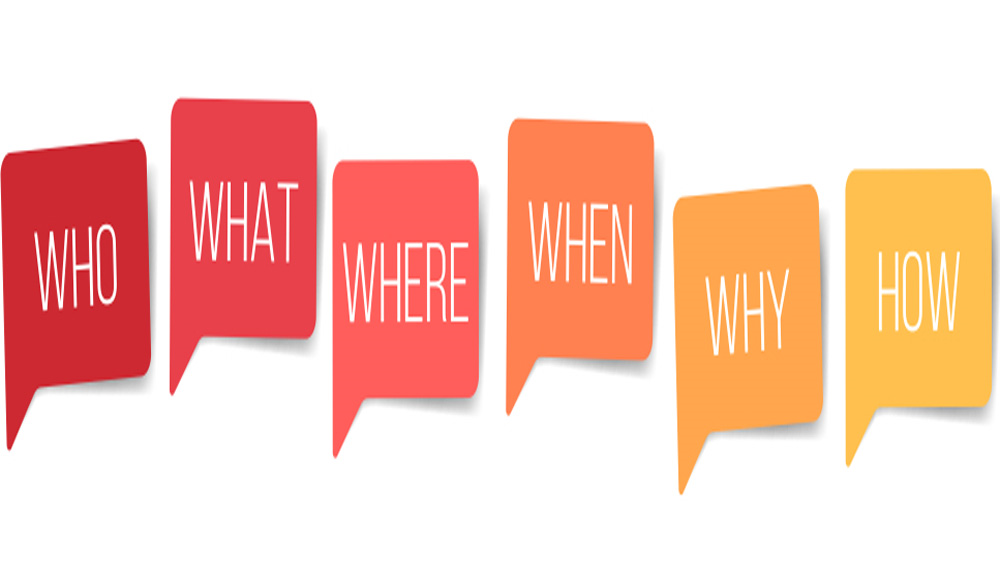افعال کمکی و ضمایر برای ساخت جملات سوالی انگلیسی Questions نیز مورد استفاده قرار میگیرند. جهت مطالعه اطلاعات بیشتر در مورد بهترین دورههای آموزش زبان انگلیسی اینجا کلیک کنید.

نویسنده: American-English File
مترجم: رؤیا کریمی جنابی
پرسشهای کوتاه tag questions
| negative verb, affirmative tag |
affirmative verb, negative tag |
She isn't here today, is she?
You aren't angry, are you?
They don't like pizza, do they?
Lucy doesn't eat meat, does she?
You didn't like the movie, did you?
Mike hasn't been to Beijing before, has he?
You won't tell anyone, will you?
Sue wouldn't quit her job, would she? |
It's cold today, isn't it?
You're Peruvian, aren't you?
They live in Ankara, don't they?
The game ends at 8:00, doesn't it?
Your sister worked in the US, didn't she?
We've met before, haven't we?
You'll be OK, won't you?
You'd go on vacation with me, wouldn't you? |
• پرسشهای کوتاه (.is he? aren’t they? do you? did we?etc) اغلب برای این به کار میروند که بفهمیم آیا چیزی که فکر میکردیم درست است؟
Your name’s Maria, isn’t it?
• برای درست کردن پرسشهای کوتاه:
- از فعل کمکی مناسب استفاده کنید مثل do/does, be برای زمان حال، did برای گذشته، will/ won’t برای آینده و ...
- از ضمیر استفاده کنید مثل he, it, they و ...
- از فعل کمکی منفی برای جملههای مثبت و فعل کمکی مثبت برای جملات منفی استفاده کنید.
ترجمه شده از 3 American-English File Student Book
سؤالی کردن
1. Should we buy her a present? How long have you been waiting? How many children does your sister have?
2. Why didn't you like the movie? Isn't this a beautiful place?
3. What are they talking about? Who does this bag belong to?
4. Who lives in that house? How many people follow you on twitter?
1. هنگامی که یک فعل کمکی داریم میتوانیم با کمک افعال وجهی و فعل و با عوض کردن جای فاعل با افعال وجهی یا کمکی (.be, have, etc) جمله سؤالی بسازیم. برای زمان حال ساده و گذشته ساده افعال کمکی do/ does و یا did را اضافه میکنیم.
2. اغلب برای نشان دادن تعجب و یا هنگامی که از کسی انتظار داریم که با ما موافقت کند، از جملات سؤالی منفی استفاده میکنیم.
3. اگر بعد از فعلی، حرف اضافه قرار گرفته باشد، حرف اضافه باید در انتها و نه در ابتدای جملات سوالی انگلیسی Questions قرار میگیرد:
NOT about what are you talking?
• اغلب اوقات فقط از کلمه پرسشی و حرف اضافه استفاده میشود:
A: I'm thinking.
B: What about?
4. هنگامی که کلماتی نظیر .who/ what/ which, etc فاعل جمله سؤالی باشند، نباید از do/did استفاده کرد:
Who wrote this? NOT who did write this?
جملات سؤالی غیر مستقیم
Could you tell me what time the store next door opens? Do you know if (whether) Mark's coming to the meeting?
هرگاه بخواهیم سؤالی را به صورت مودبانه تری بپرسیم, جملات سؤالی غیر مستقیم به کار میبریم. در جملات سوالی انگلیسی Questions به این شکل, سوال خود را با ?...can/ could you tell me آغاز میکنیم. ویدیو های آموزش زبان انگلیسی ما را اینجا مشاهده کنید.
زمانیکه با ?...Do you know یا ?...Do you remember سوال خود را مطرح میکنیم از جملات سوالی انگلیسی Questions غیر مستقیم استفاده میکنیم. جملات زیر را با هم مقایسه کنید:
What time does the store next door open? (direct question), and
Could you tell me what time the store next door opens? (indirect question)
• در جمله سؤالی غیر مستقیم ترتیب کلمات به صورت subject+ verb است:
Can you tell me where it is? NOT Can you tell me where is it?
• در بخش دوم سوال از do/ did استفاده نمیشود:
Do you know where he lives? NOT where does he live?
• در سؤالهایی که کلمه پرسشی (.what, How many, etc) نداشته باشند و همین طور پس از .can you tell me, Do you know, etc میتوانید از if/ whether استفاده کنید.
عبارات دیگری که میتوان قبل از پرسشهای غیر مستقیم به کار برد
پس از کلمات اشاره شده در زیر، ترتیب کلمات جملات سؤالی غیر مستقیم به صورت زیر است: |
|
e. g. I wonder why they didn't come.
e. g. I'm not sure what time it starts.
e. g. I can't remember where I left my phone.
e. g. I want to know what time you're coming home.
e. g. Do you have any idea if (whether) James is on vacation this week?
|
I wonder …
I'm not sure…
I can't remember…
I want to know…
Do you have any idea…?
|
ترجمه شده از 4 American-English File Student Book